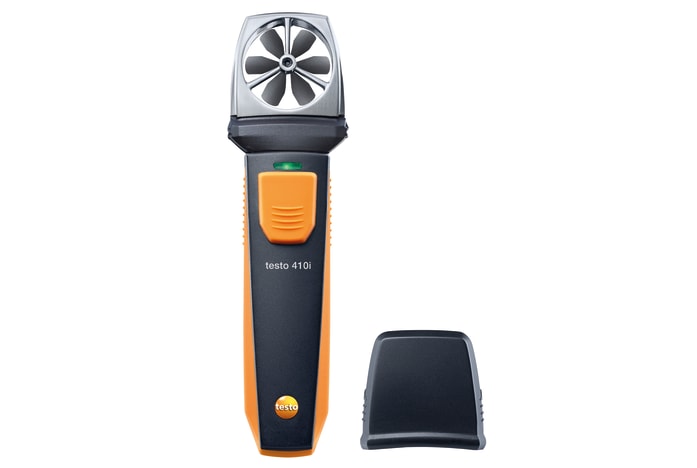All You Required to Learn About Anemometers: How They Work, Why They Matter, and Where to Make use of Them
Anemometers, though commonly ignored in the realm of clinical instruments, play a critical role in numerous fields, offering useful understandings right into wind speed and air movement patterns. Understanding the technicians behind these tools is important for anybody seeking to harness the power of this information. From meteorologists tracking weather patterns to engineers creating frameworks with wind loads in mind, the applications of anemometers are diverse and far-ranging. As we explore the intricacies of anemometer innovation, we will discover the inner workings of these tools, their value, and the vital considerations when picking the right anemometer for details applications.

Anemometer Essentials
An important instrument used to measure wind rate and direction, the anemometer plays a critical role in weather forecasting and various markets. An anemometer usually consists of three or four cups that turn in the wind, a vane that points right into the wind, and sensors to track the movements or turnings.
There are numerous kinds of anemometers offered, including cup anemometers, vane anemometers, hot-wire anemometers, and sonic anemometers, each with its unique functions and applications. Mug anemometers are commonly used for basic wind speed measurements, while vane anemometers are favored for directional dimensions. Hot-wire anemometers are suitable for low airspeeds, and sonic anemometers are optimal for high-precision dimensions in research and commercial settings. Understanding the basics of anemometers is crucial for exact wind data collection and analysis across various markets.
Concepts of Anemometer Procedure
Structure on the fundamental understanding of anemometer fundamentals, the principles of anemometer operation clarify the technicians behind wind rate and direction dimensions. Mug anemometers, for circumstances, have three or even more mugs that catch the wind, triggering them to rotate quicker as the wind rate increases. Hot-wire anemometers count on a heated wire that cools down as wind passes over it, with the price of cooling establishing the wind rate.
Significance of Anemometers
Anemometers play an important function in measuring wind rate and instructions, supplying crucial data for weather condition projecting, climate researches, environmental surveillance, and aeronautics procedures. Meteorologists rely on anemometers to gather precise wind information, assisting them understand weather condition patterns, forecast storms, and issue prompt warnings to the public. Wind ranch operators utilize anemometers to evaluate wind problems and take full advantage of electrical power manufacturing from wind generators.
Applications Across Numerous Industries
Applications of anemometers extend across varied industries, showcasing their versatility and utility beyond weather forecasting. In the sustainable power sector, anemometers play an essential duty in analyzing wind problems for wind ranch positionings, making certain ideal energy manufacturing. Industries like building and construction and mining use anemometers to keep an eye on wind rates, essential for safety and security methods, especially when working at elevations check that or in open-pit mines where strong winds can present dangers. Anemometers are additionally essential in the aviation industry, helping pilots in recognizing airspeed and wind direction for risk-free take-offs and touchdowns. The maritime sector gain more tips here from anemometers for ship navigation, aiding sailors prepare for weather condition changes and change routes as necessary. In farming, anemometers help farmers in managing crop spraying by providing real-time information on wind rate to stay clear of drift. Furthermore, anemometers locate applications in a/c systems to maximize air movement and boost power efficiency in structures. The varied usage instances of anemometers highlight their significance across numerous industries, highlighting their indispensable role in boosting operational safety and security and efficiency (anemometer).

Picking the Right Anemometer for Your Needs
Selecting the appropriate anemometer customized to your particular needs is crucial for acquiring accurate wind rate and direction dimensions. When picking an anemometer, consider elements such as the intended application, called for dimension array, environmental conditions, and desired attributes. For general objectives, a cup anemometer is appropriate for determining wind rate, while a vane anemometer provides wind direction information. Hot-wire anemometers are optimal for reduced airspeed measurements, and ultrasonic anemometers provide high precision and resilience.

Final Thought
In final thought, anemometers play an important duty in measuring wind speed and instructions across various sectors. It is important to consider the relevance that site of anemometers in order to make enlightened decisions when selecting the most ideal gadget for gauging wind conditions.
There are various types of anemometers readily available, including mug anemometers, vane anemometers, hot-wire anemometers, and sonic anemometers, each with its one-of-a-kind features and applications. Mug anemometers are commonly utilized for standard wind speed dimensions, while vane anemometers are favored for directional dimensions. Hot-wire anemometers are ideal for reduced airspeeds, and sonic anemometers are optimal for high-precision measurements in research and industrial setups.Structure on the foundational understanding of anemometer essentials, the principles of anemometer procedure elucidate the auto mechanics behind wind rate and instructions measurements. For basic purposes, a cup anemometer is appropriate for determining wind speed, while a vane anemometer supplies wind instructions information.